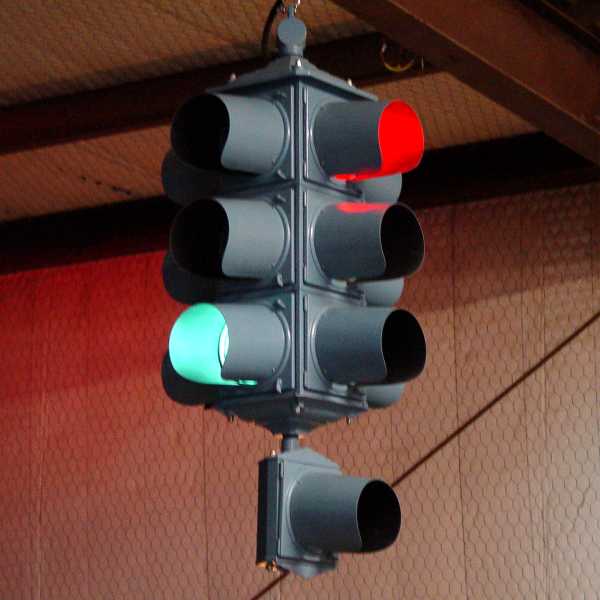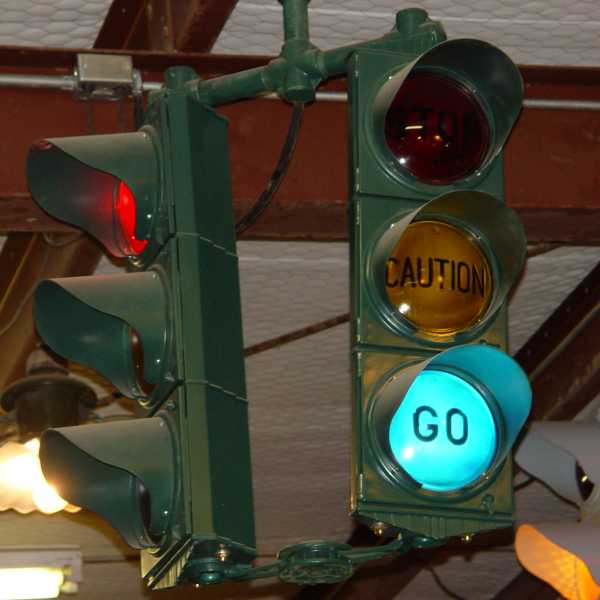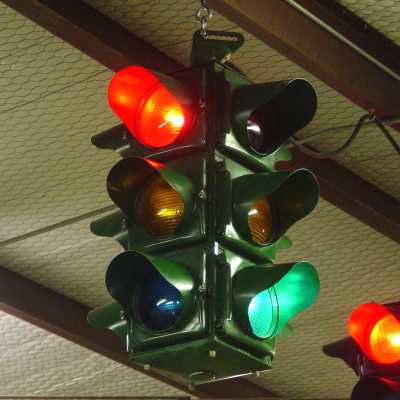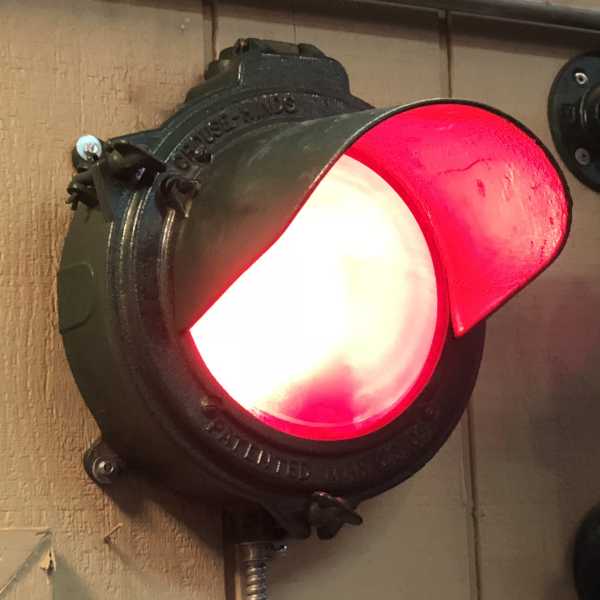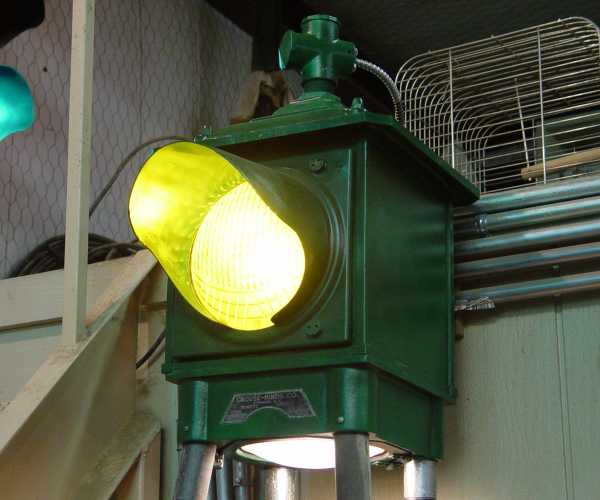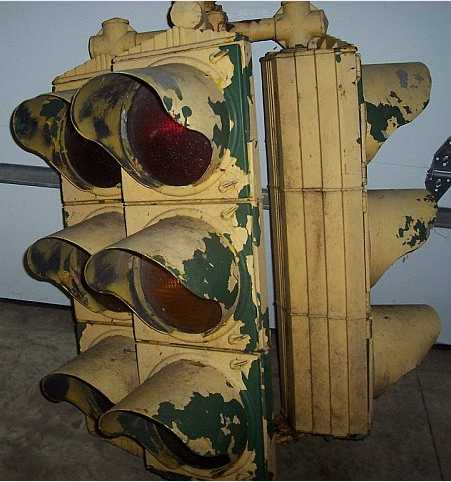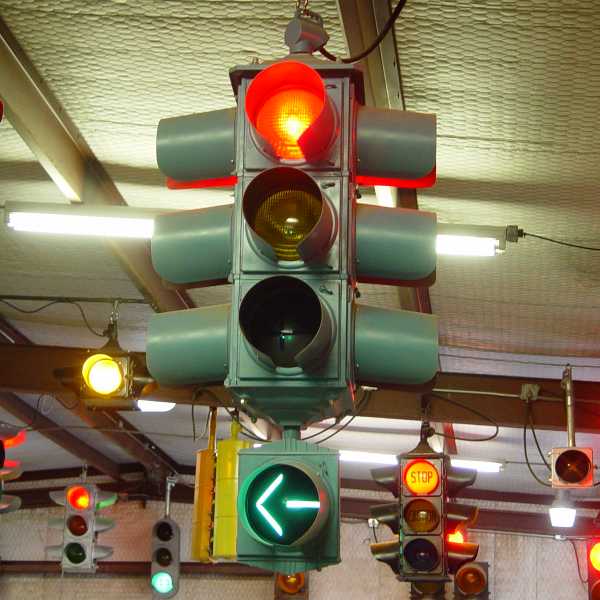Willis Lamm's
|
| CROUSE-HINDS CO. |
Type DT
|
Type DT Cluster
|
1950s-60s Type M
|
Note: Clicking on most images will bring up new or larger images on a new page.
| TYPE D / DT ART DECO SIGNALS |
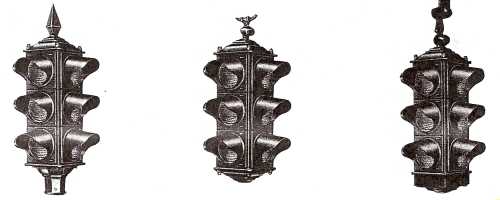
The first Crouse-Hinds signals were similar to other early manufacturers. They were ornate and were what we call "porthole" design. The lenses and lens collars looked like portholes and had to be removed to access lamp bulbs for replacement. On December 1, 1936, The Crouse-Hinds catalog showed a new Type D design that incorporated a full size door that had a braided cotton seal. The lens was held by four clips and a cork gasket sealed the space between the lens and the door. The design wasn't perfect so the door was later redesigned to allow for a rubber gasket to go around the edge of the lens, seal the space between the lens and the door and also seal the space between the lens and the reflector. The Types D and DT came in a couple of visor configurations. The stock visor was a cap or cutaway visor cast as part of the door however doors were produced with mounting collars for tunnel or full round visors. Cutaway visors were also available for use on doors with mounting collars. The factory color was Hunter Green. While lettered (command) lenses were still available, the predominant Crouse-Hinds Type D and DT lenses were known as smiley lenses. Since most signals were mounted overhead, the smiley refractors would divert part of the light in a more downward direction for easier viewing by pedestrians while most of the light from the lens would still be directed horizontally toward oncoming traffic. The earlier "large bead" smiley lenses are quite valuable. The last run of DT signals had Crouse-Hinds and Syracuse, NY cast into the upper area of the door.
Early Type D beacon with down light
|
Type DT art deco cluster before restoration
|
1952 New Orleans spec Type DT
|
Continue to Part Two
Return to Signals Page

